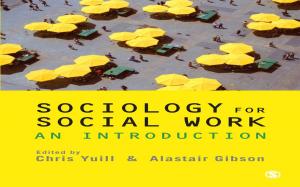The Earth's Land Surface
Landforms and Processes in Geomorphology
Nonfiction, Science & Nature, Science, Biological Sciences, Environmental Science, Nature| Author: | Kenneth J. Gregory | ISBN: | 9781446245576 |
| Publisher: | SAGE Publications | Publication: | March 23, 2010 |
| Imprint: | SAGE Publications Ltd | Language: | English |
| Author: | Kenneth J. Gregory |
| ISBN: | 9781446245576 |
| Publisher: | SAGE Publications |
| Publication: | March 23, 2010 |
| Imprint: | SAGE Publications Ltd |
| Language: | English |
"Given the sheer scale of the topic under consideration here, Professor Gregory does well to condense it into bite-size pieces for the reader. I recommend this text to all undergraduate students of physical geography and earth sciences, particularly to those in their first and second years... This book is a comprehensive and (crucially) inexpensive text that will provide students with a useful source on geomorphology."
- Lynda York*, The Geographical Journal***
"I would highly recommend this to anyone doing geology or geography at university as a 'go to' book for geomorphology and landform."
- Sara Falcone, Teaching Earth Science
"An excellent source of information for anyone who needs a well-informed, easy to use reference volume to introduce them to the fascinating complexities of the earth’s land surface, past, present and future."
- Angela Gurnell, Queen Mary, University of London
This introductory text details the land surface of the earth in a readable style covering the major issues, key themes and sensitivities of the environments/landscape.
Emphasising the major ideas and their development, each chapter includes case studies and details of influential scientists (not necessarily geomorphologists) who have contributed to the progress of understanding. Providing a very clear explanation of the understanding achieved and of the debates that have arisen, the book is comprised of 12 chapters in four sections:
- Visualising the land surface explains and explores the composition of the land surface and outlines how it has been studied.
- Dynamics of the land surface considers the dynamics affecting the earth's land surface including its influences, processes and the changes that have occurred.
- Environments of the land surface looks to understand the land surface in major world regions highlighting differences between the areas.
- Management of the land surface is an examination of the current and future prospects of the management of the earth's land surface.
With pedagogical features including further reading, questions for discussion and a glossary, this original, lively text is authored by one of the leading experts in the field and will be core reading for first and second year undergraduates on all physical geography courses.
"Given the sheer scale of the topic under consideration here, Professor Gregory does well to condense it into bite-size pieces for the reader. I recommend this text to all undergraduate students of physical geography and earth sciences, particularly to those in their first and second years... This book is a comprehensive and (crucially) inexpensive text that will provide students with a useful source on geomorphology."
- Lynda York*, The Geographical Journal***
"I would highly recommend this to anyone doing geology or geography at university as a 'go to' book for geomorphology and landform."
- Sara Falcone, Teaching Earth Science
"An excellent source of information for anyone who needs a well-informed, easy to use reference volume to introduce them to the fascinating complexities of the earth’s land surface, past, present and future."
- Angela Gurnell, Queen Mary, University of London
This introductory text details the land surface of the earth in a readable style covering the major issues, key themes and sensitivities of the environments/landscape.
Emphasising the major ideas and their development, each chapter includes case studies and details of influential scientists (not necessarily geomorphologists) who have contributed to the progress of understanding. Providing a very clear explanation of the understanding achieved and of the debates that have arisen, the book is comprised of 12 chapters in four sections:
- Visualising the land surface explains and explores the composition of the land surface and outlines how it has been studied.
- Dynamics of the land surface considers the dynamics affecting the earth's land surface including its influences, processes and the changes that have occurred.
- Environments of the land surface looks to understand the land surface in major world regions highlighting differences between the areas.
- Management of the land surface is an examination of the current and future prospects of the management of the earth's land surface.
With pedagogical features including further reading, questions for discussion and a glossary, this original, lively text is authored by one of the leading experts in the field and will be core reading for first and second year undergraduates on all physical geography courses.















